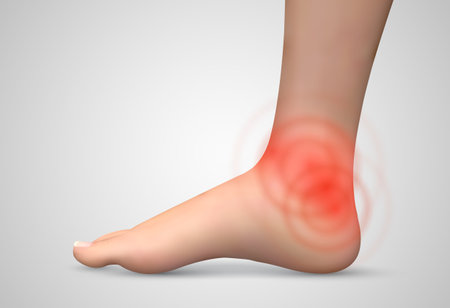Introduction: Soft Tissue Techniques in UK Physiotherapy
Within the landscape of UK physiotherapy, soft tissue techniques form a cornerstone of clinical practice, underpinning the rehabilitation and management of musculoskeletal conditions. Employed extensively across both NHS and private sectors, these interventions are pivotal in addressing common patient presentations such as back pain, sports injuries, repetitive strain injuries, and post-surgical recovery. The National Health Service (NHS) recognises the importance of evidence-based soft tissue therapies for their efficacy in alleviating pain, restoring function, and promoting holistic wellbeing. Practitioners utilise a variety of approaches tailored to individual needs, reflecting a commitment to patient-centred care. As modern physiotherapy evolves, the comparative evaluation of popular soft tissue modalities—such as myofascial release and deep tissue massage—has gained prominence. Understanding their respective roles, benefits, and applications is essential for clinicians aiming to deliver optimal outcomes within the context of contemporary UK healthcare.
2. Understanding Myofascial Release
Myofascial release (MFR) is a soft tissue technique widely used within UK physiotherapy, underpinned by an evidence-informed approach that aligns with NHS and Chartered Society of Physiotherapy (CSP) practice standards. This method specifically targets the fascia—the connective tissue enveloping muscles and organs—recognised as a crucial component in both movement and musculoskeletal health.
Principles of Myofascial Release
The theoretical foundation of MFR lies in the belief that fascial restrictions can contribute to pain, limited mobility, and altered biomechanical function. By applying sustained, gentle pressure to these restrictions, physiotherapists aim to restore fascial flexibility and promote optimal movement patterns. The technique is patient-centred and often tailored to individual presentations, aligning with British physiotherapy values of holistic care and functional rehabilitation.
Methodology in the UK Clinical Context
In practice, myofascial release typically involves:
| Step | Description |
|---|---|
| Assessment | Identifying areas of fascial tension through palpation and functional movement analysis, consistent with UK clinical assessment protocols. |
| Application | Employing slow, sustained manual pressure or stretching techniques directly to the affected fascia. |
| Integration | Combining MFR with exercise prescription and patient education as part of a comprehensive rehabilitation plan. |
Theoretical Mechanisms in British Physiotherapy Frameworks
MFR is hypothesised to work through several mechanisms: mechanical deformation of fascial tissues, stimulation of proprioceptive input, and modulation of pain pathways. These concepts are embedded within contemporary UK physiotherapy models such as the biopsychosocial framework, which considers physical, psychological, and social contributors to pain and dysfunction. Additionally, adherence to national guidelines on manual therapy ensures that MFR is employed safely and ethically, reflecting the regulatory standards upheld across British healthcare settings.

3. Deep Tissue Massage: Fundamentals and Application
Techniques of Deep Tissue Massage in UK Physiotherapy
Deep tissue massage is a cornerstone technique within UK physiotherapy practice, particularly for clients presenting with chronic muscular tension or postural dysfunction. The approach involves the application of sustained pressure using slow, deliberate strokes that target the deeper layers of muscle and connective tissue. Techniques such as stripping (deep gliding along the length of muscle fibres) and friction (pressure applied across the grain of a muscle) are commonly employed. These methods are designed to break down adhesions—bands of rigid tissue that can cause pain and limit mobility—while promoting improved circulation and facilitating the healing process.
Expected Outcomes: Clinical Benefits in Context
Within the context of UK healthcare, deep tissue massage is often integrated into rehabilitation plans with the expectation of reducing pain, increasing range of movement, and restoring function. Clients may experience initial discomfort during treatment due to the intensity required to address deep-seated restrictions; however, this is typically followed by a period of relief as tension dissipates. Research and clinical audits within UK physiotherapy settings frequently report improvements in musculoskeletal symptoms, including lower back pain and repetitive strain injuries, following a course of deep tissue interventions. Additionally, patients often note enhanced flexibility and reduced incidence of muscular spasms.
Clinical Rationale and UK Training Standards
The rationale for employing deep tissue massage in British physiotherapy is underpinned by evidence-based practice and adherence to national standards set out by bodies such as the Chartered Society of Physiotherapy (CSP). Practitioners are trained to undertake comprehensive assessment and clinical reasoning to determine when deep tissue techniques are appropriate, ensuring safety and efficacy. Terminology such as “soft tissue mobilisation” or “manual therapy” is routinely used in NHS clinics and private practices alike, reflecting standardised language across the profession. Furthermore, UK training emphasises informed consent, patient education regarding post-treatment soreness, and clear documentation—a reflection of robust governance within British healthcare.
4. Comparative Analysis: Effectiveness and Clinical Evidence
When assessing myofascial release (MFR) and deep tissue massage (DTM) in the context of UK physiotherapy, it is crucial to examine their clinical effectiveness, supporting evidence base, and suitability for different patient populations. Both techniques are widely used in musculoskeletal rehabilitation across the NHS and private practice; however, their applications and recommended usage are shaped by guidance from bodies such as the Chartered Society of Physiotherapy (CSP) and National Institute for Health and Care Excellence (NICE).
Evidence Base: What Does the Research Say?
Clinical research in the UK generally supports both MFR and DTM for reducing pain and improving function, though the strength of evidence varies between techniques and conditions. NICE guidelines frequently cite soft tissue techniques as adjuncts to exercise therapy, especially for chronic low back pain or non-specific shoulder pain. While systematic reviews acknowledge positive outcomes with both methods, MFR is often highlighted for its role in addressing fascial restrictions, whereas DTM is more commonly associated with targeting deeper muscular adhesions.
| Technique | Main Indications | Evidence Strength (UK) | Typical Patient Suitability |
|---|---|---|---|
| Myofascial Release | Chronic pain syndromes, postural dysfunction | Moderate (supported for persistent pain cases) | Patients with fibromyalgia, older adults, those sensitive to intense pressure |
| Deep Tissue Massage | Sports injuries, muscular tightness | Moderate-High (supported for sports & occupational injuries) | Athletes, physically active individuals, patients seeking robust pressure |
Clinical Effectiveness: Outcomes in Practice
According to recent UK-based clinical audits and randomised controlled trials, DTM tends to offer quicker improvements in range of motion and muscle flexibility among athletic populations. Conversely, MFR shows particular benefit in managing chronic pain where conventional massage is less tolerated. Notably, a 2022 CSP-supported review found that combining these approaches can further enhance patient-reported outcomes compared to single-modality treatment.
Patient Suitability and Individualisation of Care
The choice between MFR and DTM should be guided by patient-specific factors such as pain tolerance, medical history, activity level, and individual treatment goals. For example, NHS pathways recommend a gentler approach like MFR for those with heightened sensitivity or complex chronic presentations. Meanwhile, DTM may be preferred when targeting established muscular adhesions in high-demand occupational or sporting contexts.
Summary Table: Technique Selection Based on Key Criteria
| Criteria | MFR | DTM |
|---|---|---|
| Pain Sensitivity | Well-tolerated | May cause discomfort |
| Tissue Depth Targeted | Superficial & fascial layers | Deeper muscle layers |
| NICE/CSP Guidelines Alignment | Adjunctive role emphasised | Mainstay for musculoskeletal injuries |
This comparative analysis underscores that both myofascial release and deep tissue massage have distinct advantages within UK physiotherapy practice. Optimal results are achieved when therapists apply these techniques judiciously—guided by up-to-date evidence and tailored to each patients unique profile.
5. Considerations in UK Clinical Practice
When evaluating the application of myofascial release and deep tissue massage within UK physiotherapy, several practical considerations must be taken into account. These factors not only influence clinical outcomes but also shape the way therapists select and deliver soft tissue interventions across different healthcare settings.
Regulatory Framework and Professional Standards
The practice of physiotherapy in the UK is governed by strict regulatory standards, primarily overseen by the Health and Care Professions Council (HCPC) and professional bodies such as the Chartered Society of Physiotherapy (CSP). Both myofascial release and deep tissue massage must be delivered within the remit of evidence-based practice, ensuring patient safety and adherence to clinical guidelines. Therapists are expected to demonstrate competency in these techniques through accredited training and ongoing professional development, reflecting the British emphasis on accountability and quality assurance.
Patient Preferences and Cultural Context
In the UK, patient-centred care is a guiding principle in physiotherapy. Individual preferences, previous experiences, and cultural attitudes towards manual therapy play a significant role in treatment planning. For instance, some patients may favour myofascial release for its gentle approach, while others might prefer the intensity of deep tissue massage. Open communication, informed consent, and shared decision-making are standard practice, aligning with NHS values and promoting trust between practitioners and service users.
Integration within the British Healthcare System
Physiotherapists working in both NHS and private sectors must navigate unique systemic challenges. Time constraints in NHS appointments often necessitate streamlined interventions, which may influence the choice or adaptation of soft tissue techniques. Moreover, multidisciplinary collaboration is common—therapists frequently coordinate care with GPs, pain specialists, or musculoskeletal teams to ensure holistic management. Access to advanced manual therapy modalities can also vary regionally, reflecting local commissioning priorities and resource allocation.
Practical Adaptations and Local Approaches
Across the UK, there is a growing trend towards integrating manual therapy with exercise prescription and education for sustainable outcomes. Therapists may adapt their use of myofascial release or deep tissue massage based on current best evidence as well as pragmatic considerations such as available time, equipment, or patient throughput. Regional variations exist; for example, urban clinics may have greater access to specialist training or adjunctive therapies compared to rural practices.
Conclusion: Navigating Complexity in Clinical Decision-Making
Ultimately, effective use of myofascial release versus deep tissue massage within UK physiotherapy hinges on balancing regulatory compliance, patient expectations, and practical realities of British healthcare delivery. By staying attuned to these contextual factors, clinicians are better equipped to tailor interventions that reflect both scientific rigour and local needs.
6. Conclusion: Choosing the Right Technique for UK Patients
When it comes to selecting between myofascial release and deep tissue massage within the context of UK physiotherapy, both practitioners and patients must consider a range of clinical, cultural, and individual factors. Each technique offers distinct advantages depending on the presenting condition, patient preference, and desired therapeutic outcomes. Myofascial release is particularly well-suited for cases where fascial restrictions are prominent, such as in chronic pain syndromes or postural imbalances commonly seen among office workers in the UK. This technique’s gentle, sustained pressure aligns with patient-centred care approaches valued in British healthcare settings, making it a popular choice for those seeking gradual yet long-lasting relief.
Deep Tissue Massage: When to Use It
In contrast, deep tissue massage is most effective when addressing specific muscular adhesions or more acute soft tissue injuries—frequently encountered in sports-related scenarios or physically demanding occupations across the UK. Its focused pressure enables physiotherapists to target deeper muscular layers, which can accelerate recovery for patients requiring prompt return to activity. However, it may not be suitable for individuals with lower pain tolerance or certain medical conditions, underscoring the necessity for thorough assessment prior to intervention.
Patient-Centred Decision-Making
UK-based physiotherapists are encouraged to adopt a collaborative approach that involves educating patients about both techniques, their mechanisms, potential benefits, and any risks involved. Open communication ensures treatment aligns with patient expectations and lifestyle requirements—a principle enshrined in NHS guidelines and reflective of British healthcare culture. Moreover, consideration of co-existing conditions such as fibromyalgia or arthritis is essential in tailoring interventions to maximise safety and efficacy.
Summary for Clinical Practice
In summary, myofascial release provides a gentle option ideal for managing chronic fascial tension and enhancing overall movement quality, while deep tissue massage offers targeted relief for localised muscular issues. The optimal choice should always be guided by a comprehensive assessment of each patient’s clinical presentation and personal preferences. By integrating evidence-based reasoning with a nuanced understanding of the UK’s unique healthcare landscape, physiotherapists can ensure they deliver high-quality, personalised care that meets the diverse needs of their patients.


